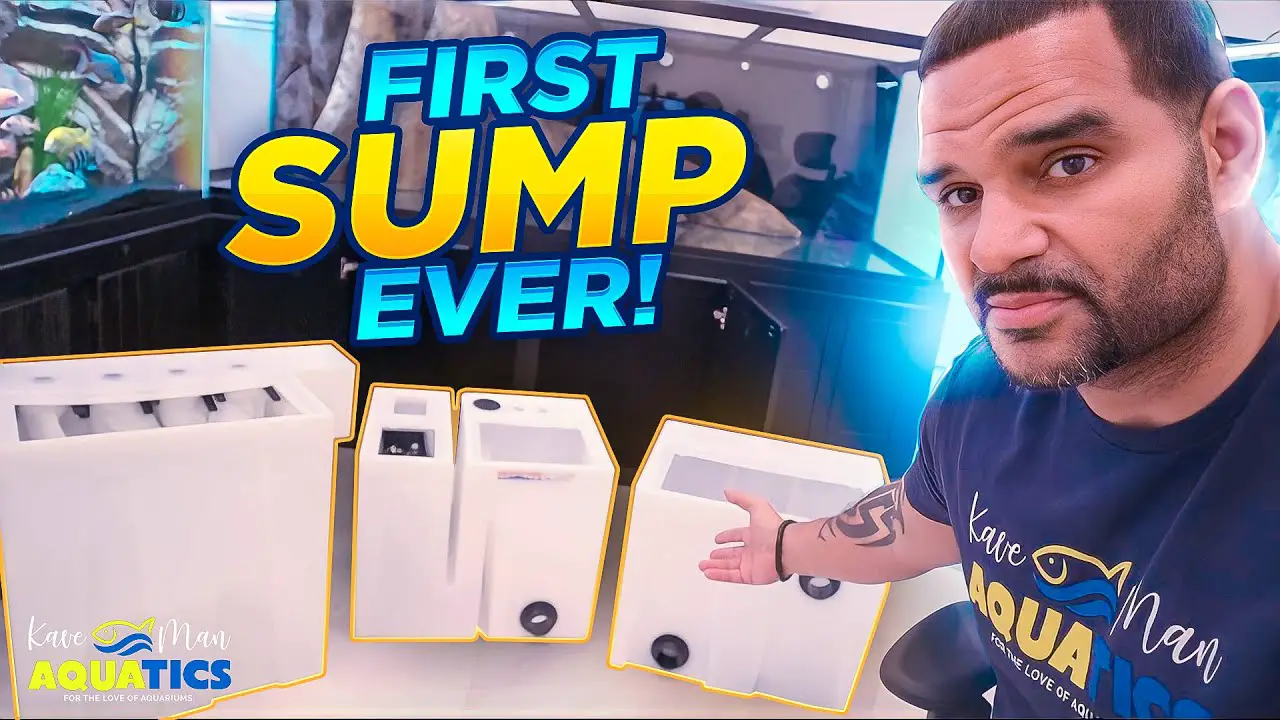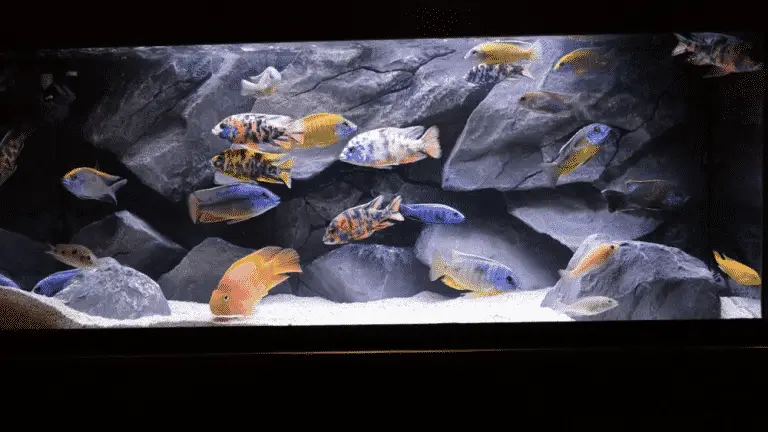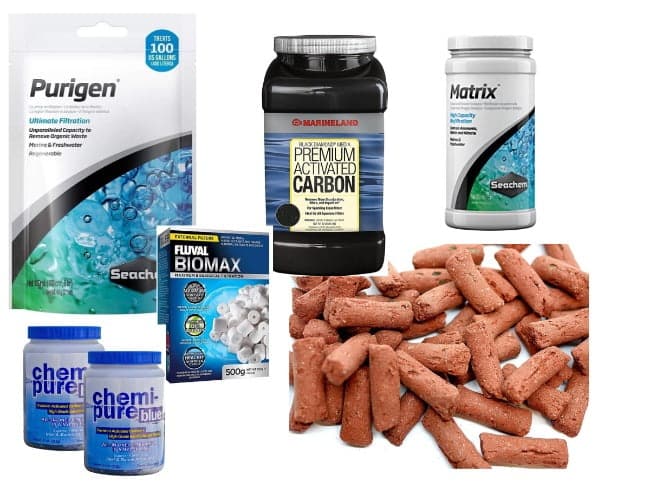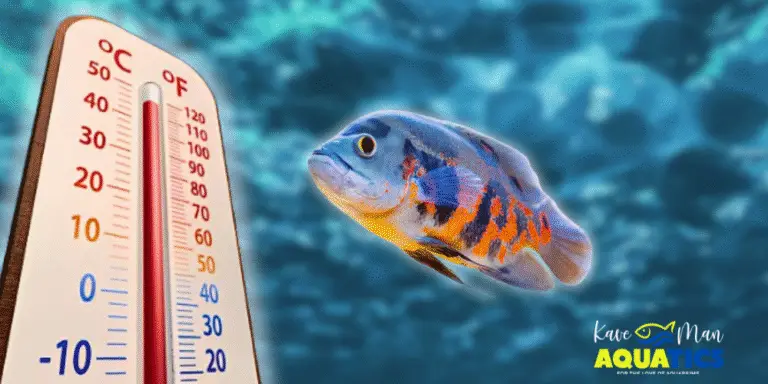A Seamless Sump Experience: A Beginner’s Guide to How an Aquarium Sump Works
Are you ready to dive into the world of aquarium sumps? In this beginner’s guide, we’ll unravel the mysteries of how an aquarium sump works and show you how to create a seamless sump experience. We understand that the idea of setting up a sump can be a bit overwhelming for newcomers to the hobby, but fear not! This comprehensive guide will demystify the process and provide you with all the information you need to confidently embark on your sump setup journey.
Whether you’re looking to enhance filtration, increase water volume or improve overall system efficiency, we’ve got you covered. So, let’s get started and unlock the full potential of your aquarium with a well-designed sump!
What Is an Aquarium Sump?
An aquarium sump is an additional tank or chamber that works alongside your main display tank to enhance the filtration process. It acts as a hidden powerhouse, housing equipment like heaters, protein skimmers and media reactors. The sump setup consists of different compartments that handle specific filtration tasks. So, what’s the purpose? Well, an aquarium sump provides several benefits:
- Increases water volume: First, it increases water volume, which helps dilute toxins and creates a more stable environment for your fish.
- Customized sump filtration: A sump allows for customized sump filtration, including mechanical, chemical and biological filtration.
- Reduces clutter: Lastly, using an aquarium sump reduces clutter in the main tank, creating a visually appealing display.
With a seamless sump, you’ll have a smoother fish-keeping journey and enjoy the advantages it brings to maintaining a healthy aquarium.
How an Aquarium Sump Works

How does an aquarium sump work its magic? Let’s uncover the inner workings of this seamless sump and understand its role as a filtration system and water management tool. The sump setup operates on a simple yet effective principle.
- Water circulation: The process begins with water from the main tank being drained into the sump through an overflow system. This continuous flow ensures efficient water circulation. Once in the sump, the water goes through different filtration stages.
- Mechanical filtration: First up is mechanical filtration, where debris and particles are removed. This is typically achieved using filter socks or foam pads that trap unwanted substances, keeping the water clear and pristine.
- Chemical filtration: Next, the water moves on to chemical filtration. This stage involves the use of specific media like activated carbon or phosphate remover to neutralize impurities, odors and discoloration, further enhancing water quality.
- Biological filtration: The final and crucial stage is biological filtration. This is where beneficial bacteria come into play. In a designated area of the sump, such as live rock or biological media, these bacteria thrive and help break down harmful ammonia and nitrite, converting them into less toxic nitrate. This promotes a healthier environment for your aquatic inhabitants.
Additionally, the sump can house additional equipment such as heaters, protein skimmers and even refugium, which contribute to maintaining optimal water conditions and promoting overall tank health.
To sum it all up, an aquarium sump works by facilitating water flow, providing mechanical, chemical and biological filtration and accommodating essential equipment. With a properly set up sump, you can enjoy a seamlessly functioning filtration system and provide a thriving habitat for your aquatic friends.
Components of an Aquarium Sump
An aquarium sump is a dynamic filtration system that comprises several key components working together to maintain a clean and healthy aquatic environment. Understanding these components will help you grasp how an aquarium sump works seamlessly. Let’s take a closer look:
- Sump tank: At the heart of the system, the sump tank serves as a reservoir for the water from the main tank. It provides space for additional filtration equipment and helps increase overall water volume, enhancing stability and diluting pollutants.
- Overflow box: The overflow box facilitates the transfer of water from the main tank to the sump. It utilizes a system of weirs or pipes to ensure a continuous flow of water, preventing overflow and maintaining optimal water levels.
- Return pump: The return pump is responsible for pushing the filtered water back into the main tank. It creates a steady circulation and allows for the integration of additional equipment, such as protein skimmers or media reactors, to further enhance water quality.
- Plumbing: The plumbing consists of pipes and fittings that connect the overflow box, sump, return pump and other components. It ensures a proper flow of water between the different stages of filtration, maintaining a seamless operation.
Optional Components:
- Protein skimmers: These devices aid in removing organic compounds and dissolved proteins from the water, improving water clarity and reducing the load on biological filtration.
- Media reactors: Media reactors provide a controlled environment for various filter media, such as activated carbon or phosphate removers. They enhance chemical filtration, targeting specific water quality issues.
Understanding the purpose and role of each component in your sump setup is vital for maximizing sump filtration efficiency. Remember, a seamless sump experience begins with the right components working harmoniously together.
Setting Up an Aquarium Sump
Setting up an aquarium sump may seem daunting at first, but with a step-by-step approach, you can achieve a seamless sump experience. Let’s dive into the process and discover how to set up your sump for efficient filtration.
Step 1: Gather the Necessary Equipment and Materials
Before you begin, gather the following items:
- Sump tank: Choose a sump tank appropriate for your aquarium size, considering its dimensions and capacity.
- Overflow box: Select an overflow box that matches the flow rate of your aquarium pump and ensures a smooth transition of water from the main tank to the sump.
- Return pump: Pick a reliable and energy-efficient return pump suitable for the water volume and head height of your system.
- Plumbing: Acquire the necessary PVC pipes, fittings and valves to connect the components. Make sure to measure and cut the pipes accurately for a proper fit.
- Additional equipment: Consider optional components like protein skimmers, media reactors and heaters if they align with your filtration needs.
Step 2: Positioning and Installation
Consider the following tips when positioning and installing your sump:
- Location: Choose a secure and accessible area for your sump, preferably below or beside the main tank. Ensure it can handle the weight and has enough space for maintenance.
- Plumbing setup: Install the overflow box on the main tank, ensuring a secure fit and proper water flow. Connect the overflow box to the sump using the PVC pipes and fittings, considering the optimal path for water circulation.
- Return pump placement: Position the return pump inside the sump, either submerged or externally depending on the pump design. Secure the plumbing connections and adjust the flow rate as needed.
Additional equipment integration: If you’re incorporating protein skimmers or media reactors, follow the manufacturer’s instructions for their installation and placement within the sump.
Step 3: Test and Adjust
Once everything is set up, fill the sump with water and test the system for leaks, ensuring all connections are watertight. Make any necessary adjustments to the plumbing and equipment placement to optimize water flow and filtration efficiency.
With your aquarium sump successfully set up, you’re one step closer to a seamless sump experience.
Maintenance and Troubleshooting
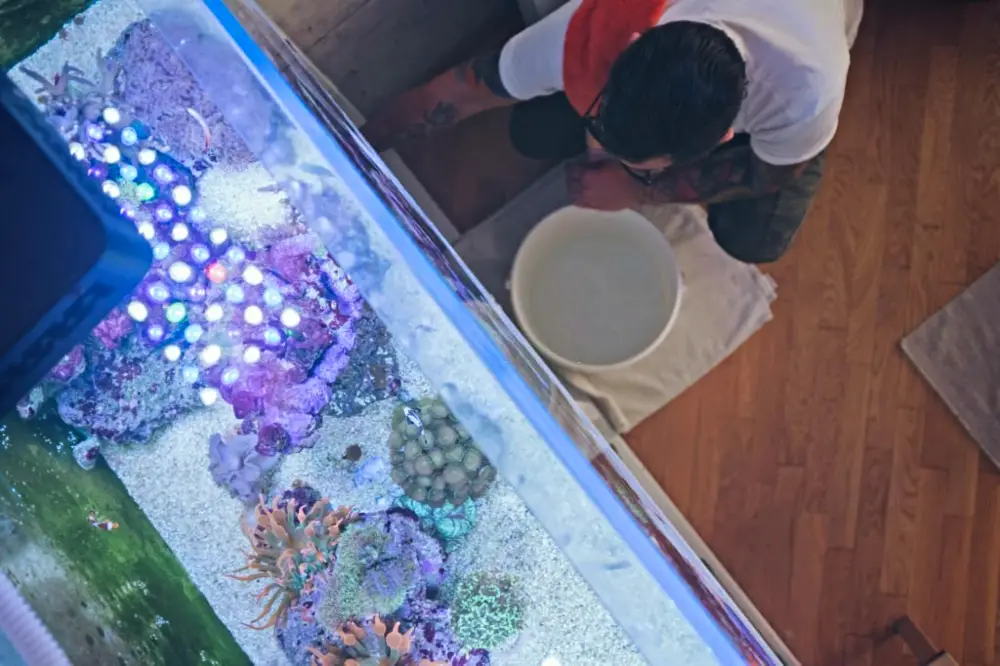
Maintaining a seamless sump experience requires regular maintenance and the ability to troubleshoot common issues. Let’s explore the essential maintenance tasks and troubleshooting tips to keep your aquarium sump working optimally.
Regular Maintenance
- Cleaning: Periodically clean the sump components, including the overflow box, sump tank and plumbing. Remove any debris or algae buildup to ensure proper water flow and prevent clogs.
- Water level checks: Regularly monitor the water level in the sump and adjust as necessary. Maintain the water level within the designated range to ensure the smooth operation of the system.
- Media replacement: Replace filter media, such as filter socks, mechanical filters and biological media, according to the manufacturer’s recommendations. This helps maintain efficient filtration and prevents the accumulation of waste.
Pro Tip: To ensure optimal performance of the sump system, keep a maintenance schedule and track your tasks to stay on top of routine care.
Troubleshooting Common Issues
- Noise: If your sump system is making unusual noises, check for loose fittings, worn-out pump parts or excessive vibrations. Tighten any loose connections and consider using vibration-dampening materials to minimize noise.
- Leaks: Address any signs of leaks immediately. Inspect all plumbing connections, seals and the sump tank for potential leaks. Replace faulty components or reseal as needed to prevent water damage and maintain system integrity.
- Flow problems: Insufficient flow or reduced water circulation can indicate a clogged or malfunctioning component. Check for obstructions in the overflow box, plumbing lines and impeller of the return pump. Clean or replace affected parts to restore proper flow. Learn more on how to prevent aquarium sump overflows.
Pro Tip: Regularly monitor the performance of your sump system, observe water movement and stay vigilant for any irregularities. Catching and resolving issues early can prevent more significant problems down the line.
Customization and Expansion Options

One of the fantastic aspects of an aquarium sump is its flexibility, allowing for customization and expansion as your fishkeeping journey progresses. Let’s explore the various options you have to tailor your sump system to your specific needs.
Flexibility and Customization
An aquarium sump provides a blank canvas for customization, allowing you to incorporate additional equipment based on your requirements. One popular addition is a protein skimmer, which removes organic compounds and reduces the risk of algae blooms. This equipment enhances water quality by efficiently removing dissolved proteins and other waste.
Media Reactors are another valuable addition to consider. They house specialized media, such as activated carbon or phosphate removers, which help maintain optimal water chemistry by removing impurities.
Expansion as Your Tank Grows
As your aquarium matures and your aquatic family expands, you may find the need to increase your sump’s capacity. Luckily, most sump setups offer expandability options. You can extend the sump tank itself or incorporate additional chambers to accommodate more filtration media or equipment.
The ability to customize and expand your sump system ensures that it can adapt to your changing needs and support the growth of your aquarium. Whether you want to enhance filtration, introduce new equipment or expand the filtration capacity, your aquarium sump offers endless possibilities.
Remember, don’t hesitate to explore different customization options and expansion opportunities as you gain experience in the hobby. The seamless sump experience allows you to evolve your filtration system alongside your flourishing aquatic world.
Aquarium Sump vs. Canister Filter
When it comes to filtration options for your aquarium, two popular choices are an aquarium sump and a canister filter. Let’s compare these two options to help you make an informed decision.
Aquarium Sump: The Seamless Solution
An aquarium sump offers several advantages over a canister filter. First and foremost, the seamless sump experience ensures superior filtration efficiency. With a sump, you have the flexibility to customize and expand your filtration system as your tank grows. This means you can incorporate additional equipment like protein skimmers and media reactors, enhancing water quality and maintaining optimal conditions for your fish.
Another advantage of an aquarium sump is its ability to provide increased water volume. The sump acts as an additional reservoir, allowing for better dilution of impurities and improved stability in water parameters. Additionally, a sump can be hidden away, reducing clutter in your main display tank and providing a cleaner aesthetic.
Canister Filter: Compact Convenience
While an aquarium sump offers numerous benefits, a canister filter also has its advantages. Canister filters are compact and can be easily installed under or beside your aquarium, making them a space-saving option. They are generally easier to set up and maintain, especially for smaller tanks.
However, it’s important to note that canister filters may have limitations in terms of filtration capacity and customization options. They typically come with a fixed number of compartments and limited space for additional equipment.
Choosing the Right Option
When choosing between an aquarium sump and a canister filter, consider factors such as the size of your tank, the desired level of customization and your long-term goals in the hobby. If you have a larger tank, plan on expanding and value the ability to customize your filtration system, an aquarium sump is the way to go.
Ultimately, the seamless sump experience, with its versatility, expandability and superior filtration capabilities, provides a compelling argument for choosing an aquarium sump as the ideal filtration solution for your fishkeeping journey.
Maximizing Your Aquarium’s Potential: Embrace the Seamless Sump Experience!
Congratulations, fish-keeping beginners! You’ve now gained a solid understanding of how an aquarium sump works and the benefits it brings to your aquatic haven. By incorporating a seamless sump into your setup, you’re setting the stage for an optimized and thriving aquarium environment.
With an aquarium sump, you unlock a world of possibilities. The versatility and customizability of the sump setup allow you to tailor your filtration system to meet the unique needs of your tank and its inhabitants. The seamless sump experience ensures efficient water circulation, superior filtration and expanded water volume, promoting optimal water quality and stability.
Don’t let the initial intimidation hold you back! If you’re seeking personalized guidance and 1-on-1 coaching to make the most of your aquarium sump, look no further than KaveMan Aquatics.
Unlock the potential of your aquarium and embrace the seamless sump experience today. Your aquatic companions will thank you!
-
A Seamless Sump Experience: A Beginner’s Guide to How an Aquarium Sump Works
Fishkeeping beginners, do you know how an aquarium sump works? Read our guide on setting up your first sump to ensure a seamless sump experience.

